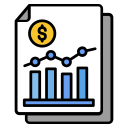Case Files: Balance in the Real World
During the financial crisis, objective indicators signaled acute systemic stress—spiking spreads, collapsing interbank trust. Opinion shaped urgency: how far to go to backstop markets without entrenching risk. Balanced analyses clarified both risks, guiding pragmatic, time-bound interventions.
Case Files: Balance in the Real World
Early forecasts juggled sparse data, exponential dynamics, and policy experimentation. Analysts documented assumptions, updated priors weekly, and admitted unknowns. Judgment about behavior mattered as much as epidemiology. Which lessons stuck with you? Share, and we will feature community insights.




